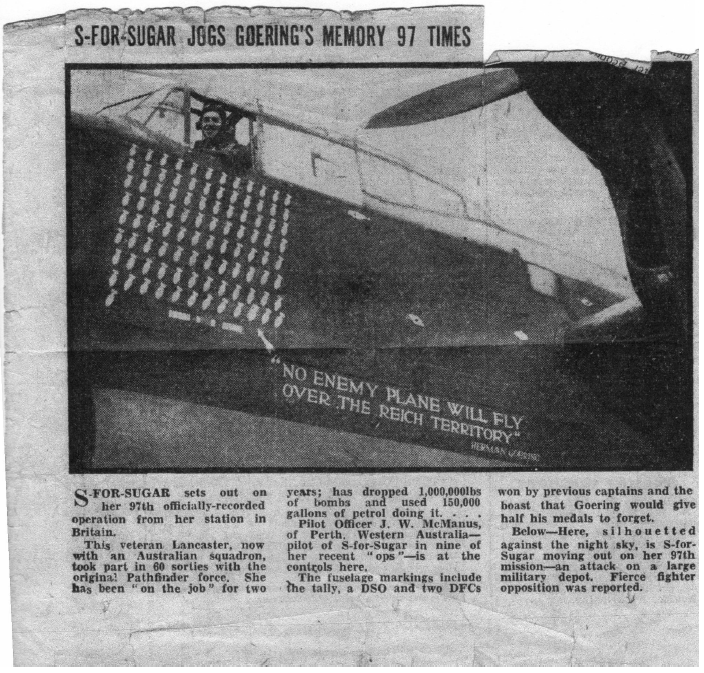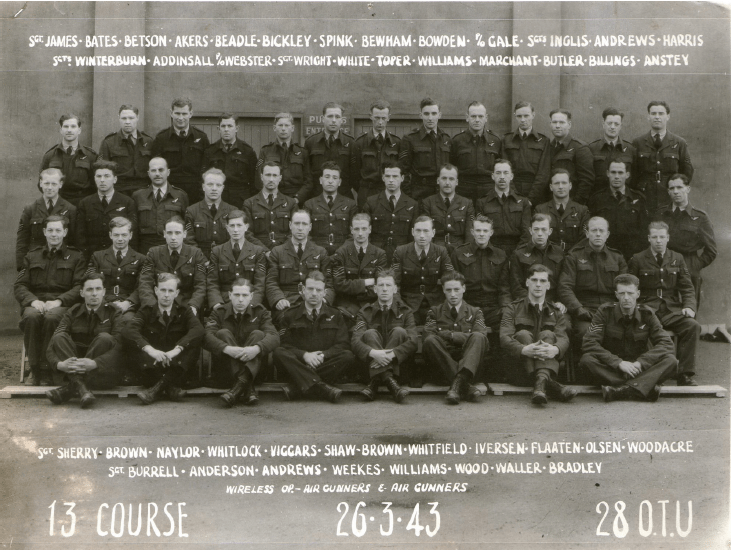Served with No. 1 Group, 166 Squadron, RAF Bomber Command as a Rear Gunner from 18 May 1942, died in service 17 December 1943
Stationed at:
| Tranent | Gladsmuir |
| Haddington | North Berwick |
| Drim | East Fortune |
| East Linton | Dunbar |
| Dalkeith | Lauder |
| Stow | Cockburnspath |
| Duns | Greenlaw |
| Earlston | Melrose |
| Galashiels | Prestonpans |
| GullaneEast | Reston |
| Peebles | Queensferry |
| Rosyth | Dunfermline |
| Port Seton | Eddleston |
| Burntisland | Kirkcaldy |
| Balerro | Berwick |
| Newcastle | Darlington |
| York | Doncaster |
| Barnetby | Brocklesby |
| Kirmington | Grimsby |
| Brigg | Scunthorpe |
| St Boswells |
Serving on Lancaster Bomber JB639 – Crew at time of death
Arthur Edward Brown (170737) – Pilot
Henry Albert Williams (1801135) – Navigator
Charles George Thompson (1637596) – Flight Engineer
Norman Nowell Griffin (1396113) – Air Bomber
Leslie Dennis Perry (1324106) – Wireless Operator/Air Gunner
Edward Victor Smith (1811495) – Air Gunner
David Wilson Inglis (1569642) – Rear Gunner
This crew stationed at:
| Edinburgh | Berwick |
| Newcastle | Darlington |
| York | Doncaster |
| Barnetby | Brocklesby |
| Kirmington | Grimsby |
| Brigg |
Sgt David Inglis may have been a member of the crew of this Lancaster S for Sugar which is not confirmed at time of compilation of this memorial. (Newspaper cutting in his widow’s possession at the time and mentioned in her notes of his service).
S for Sugar crashed, then E for Embrace – 166 Squadron
Sergeant Inglis and all the above crew were killed upon returning from a night bombing raid on Berlin. They were part of a 498 aircraft force (including Lancasters and Mosquitoes) which set off from Kirmington at 16.20 hours on 16 December 1943. The route led directly to Berlin across Holland and Northern Germany. They were met by German fighters at the coast of Holland and further fighters were guided onto the bomber stream throughout the approach to the target. More fighters were waiting at the target where many combats took place. The bombers shook off the opposition on the return flight by taking a Northerly route over Denmark.
Lancaster JB639 successfully fulfilled their mission and returned to England where the weather was worse than forecast with low cloud base over high ground. They crashed at 23.35 hours on 16 December 1943 attempting to find the airfield near Little Walk Farm, Thornton Curtis, Lincolnshire, with the loss of all seven crew members. The squadrons of Nos. 1, 6 and 8 Groups were particularly badly affected by these adverse weather conditions– in total, 29 Lancasters either crashed or were abandoned when their crews parachuted. No. 1 Group, of which JB639 was a part, suffered the heaviest losses with 13 aircraft lost.
25 Lancasters were lost on the raid.
The bodies were taken to RAF Elsham Wolds, Lincolnshire, and buried in Brigg Cemetery, a small market town 10 miles South of Barton-upon-Humber, Lincolnshire. Sergeant Inglis’ grave 181, Plot B.





